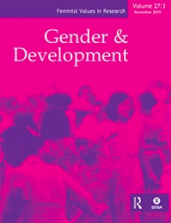Engendering Migrant Counterpublics: Fun, care, solidarity, and resistance among Ethiopian domestic workers in Lebanon

Overview
Research documenting the re-configurations of ‘public–private’ boundaries encountered by migrant domestic workers has observed how they often create a sense of ‘home’ in public spaces in destination countries. Migrant workers’ occupation of, and interactions in, public spaces such as parks, malls, restaurants, and churches in effect create ‘private spheres’ where they can relax and be themselves with friends and sometimes partners. Yet migrant women also often face a double exclusion from the public sphere as political subjects, first as women and second as migrants. Their physical presence in the public sphere may be highly regulated by gender norms, and their participation in the public sphere is limited due to their exclusion from citizenship or even labour entitlements. Drawing on Nancy Fraser’s concept of subaltern counterpublics, this paper argues that migrant domestic workers’ experiences of re-configuring public and private spaces within Lebanon contribute to the creation of ‘migrant counterpublics’ that challenges the methodological-nationalist limitations of conceptualisations of citizenship and participation in the public sphere. I make these reflections through an auto-ethnographic account of my experiences while researching the working lives and conditions of Ethiopian migrant domestic workers in Lebanon. Central to these reflections on our navigation of public spaces is the consideration of our embodied experiences as racialised women, which intersected with our differential class, sexuality, and migrant status positioning.
Keywords
Additional details
Author(s)
Publisher(s)
Editor(s)
DOI
https://doi.org/10.1080/13552074.2024.2348392ISBN
1355-2074How to cite this resource
Citation styles vary so we recommend you check what is appropriate for your context. You may choose to cite Oxfam resources as follows:
Author(s)/Editor(s). (Year of publication). Title and sub-title. Place of publication: name of publisher. DOI (where available). URL
Our FAQs page has some examples of this approach.
Message in a Book: Learn about and support Oxfam’s work



